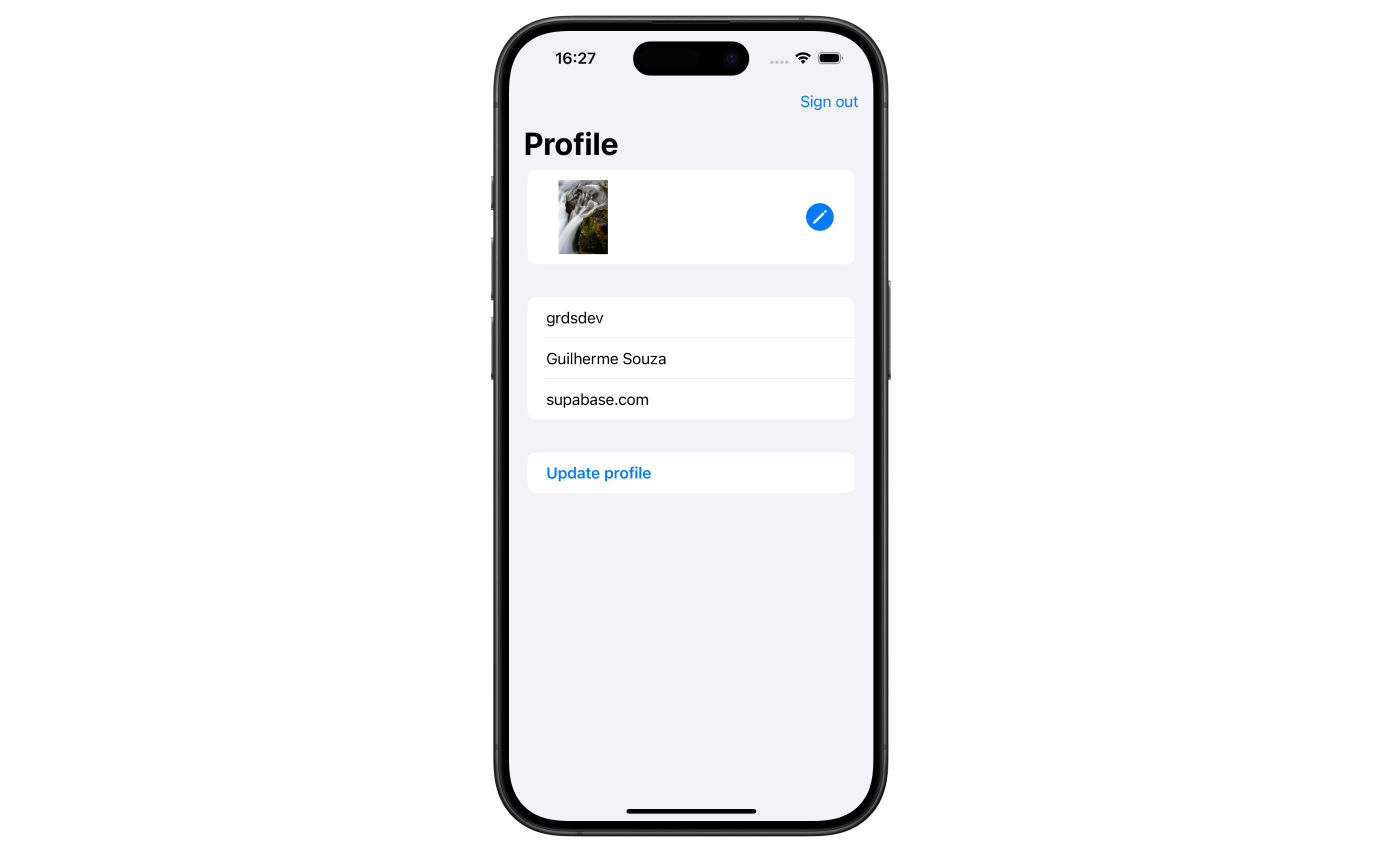Supabase Swift User Management
This repo is a quick sample of how you can get started building apps using Swift and Supabase. You can find a step by step guide of how to build out this app in the Quickstart: Swift guide.
This repo will demonstrate how to:
- Sign users in with Supabase Auth using magic link
- Store and retrieve data with Supabase database
- Store image files in Supabase storage
Getting Started
Run cp .env.example .env and fill in your credentials.
Run the application in a device or simulator using Xcode.
Database Schema
-- Create a table for public "profiles"
create table profiles (
id uuid references auth.users not null,
updated_at timestamp with time zone,
username text unique,
avatar_url text,
website text,
primary key (id),
unique(username),
constraint username_length check (char_length(username) >= 3)
);
alter table profiles enable row level security;
create policy "Public profiles are viewable by everyone."
on profiles for select
using ( true );
create policy "Users can insert their own profile."
on profiles for insert
with check ( (select auth.uid()) = id );
create policy "Users can update own profile."
on profiles for update
using ( (select auth.uid()) = id );
-- Set up Realtime!
begin;
drop publication if exists supabase_realtime;
create publication supabase_realtime;
commit;
alter publication supabase_realtime add table profiles;
-- Set up Storage!
insert into storage.buckets (id, name)
values ('avatars', 'avatars');
create policy "Avatar images are publicly accessible."
on storage.objects for select
using ( bucket_id = 'avatars' );
create policy "Anyone can upload an avatar."
on storage.objects for insert
with check ( bucket_id = 'avatars' );
